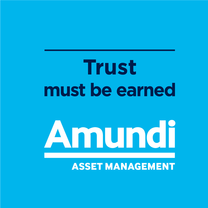Newsroom
Amundi study : “ESG Investing in Fixed Income: It’s Time to Cross the Rubicon”
London, UK, February 10, 2020

London, 10 February 2020 – Amundi, Europe’s largest asset manager and a pioneer in responsible investment, releases the key findings of its study on the impact of ESG investing on fixed income portfolios.
ESG integration has outperformed the market since 2014 in Europe
Since 2014, the integration of ESG has created alpha in EUR-denominated fixed income portfolios. Indeed, for Euro-denominated investment grade (“IG”) bonds portfolio, the annual excess credit return* of long/short strategy between best-in-class bonds (20% best-rated according to ESG scores) and worst-in-class bonds (20% worst-rated according to ESG scores) bonds reaches 37 bps. This holds for the overall ESG score, as well as for individual “E”, “S” or “G” scores. Likewise, if we control for the tracking error risk with respect to the benchmark, we see similar patterns: we found that prior to 2014, ESG-optimised portfolios underperformed by 36 bps, whereas since 2014, ESG integration has outperformed by 3 bps in average per year if we target a tracking error of 25 bps.
In the case of Dollar-denominated IG bonds, the results are more disappointing in absolute value, but the correlation between ESG and performance is positive. Indeed, ESG investing was a source of underperformance from 2010 to 2019 if we consider both long/short, best-in-class versus worst-in-class strategies and benchmark-controlled optimized portfolios. Nevertheless, we noticed that the large underperformance during the 2010-2013 period has decreased significantly in the more recent period. The annual cost of ESG investing is 9 bps per year for benchmarked strategy since 2014 vs 24 bps from 2010 to 2013.
The study also indicates that the issuer region is more important than the currency of issuance. Indeed, ESG investing was a source of outperformance for IG bonds of European issuers, but a source of underperformance for IG bonds of American issuers, regardless of currency.
A winning factor for issuers
The study also demonstrates the positive impact of ESG on the cost of capital of issuers. For instance, after controls for credit quality, we estimate that, in the case of EUR IG corporate bonds, the theoretical cost of funding difference between a worst-in-class corporate and a best-in-class corporate is 31 bps during the 2014-2019 period. In the case of USD IG corporate bonds, the difference is lower but remains significant at 15 bps. These results demonstrate the correlation between ESG investing and ESG financing and highlight that in order to tackle environmental and social issues, ESG is a winning factor for issuers.
The time is ripe for accelerating the integration of ESG screening
Whilst ESG integration is a natural strategy for equity investors seeking lower extra-financial risks, the picture is slightly more complex when analyzing fixed income. For instance, Amundi observes that ESG integration is less developed because these filters can lead to significant exclusions or underweighting inside Sovereign bonds for example, which curtails liquidity, or because the bonds selection depends mainly of three factors (Duration, spread and liquidity). Nevertheless, considering the excess credit return offered by ESG integration in fixed income portfolios, bond portfolio managers have to go beyond just a completion of green bonds or social bonds in its investments or implementing an exclusion policy.
Eric Brard, Head of Fixed Income at Amundi, said: “ESG is at a turning point in fixed income. Beyond worst-in-class exclusions or completing the portfolio with Green, Social or Sustainable bonds, being a true ESG investor, implies considering a full integration of ESG screening in fixed income portfolios. The fixed income universe is an appropriate channel to seek impact on corporate firms. The time has come to reconsider ESG in bond picking processes and bond portfolio construction. ESG integration is now a matter of fiduciary duty for both asset managers and asset owners.”
Thierry Roncalli, Head of Quantitative Research at Amundi, commented: “As a responsible steward of capital, it is our duty to constantly monitor the pulse of ESG investing dynamics to ensure that we remain at the forefront of responsible investing. We are pleased to update our academic research to include corporate bonds, where historically the industry has lacked robust data. Our goal is to produce rigorous research across all traditional asset classes.”
*The excess credit return is the part of the performance after neutralizing the interest rate and yield curve risk
About Amundi
About Amundi
Amundi, the leading European asset manager, ranking among the top 10 global players[1], offers its 100 million clients - retail, institutional and corporate - a complete range of savings and investment solutions in active and passive management, in traditional or real assets. This offering is enhanced with IT tools and services to cover the entire savings value chain. A subsidiary of the Crédit Agricole group and listed on the stock exchange, Amundi currently manages more than €2.3 trillion of assets[2].
With its six international investment hubs[3], financial and extra-financial research capabilities and long-standing commitment to responsible investment, Amundi is a key player in the asset management landscape.
Amundi clients benefit from the expertise and advice of 5,600 employees in 35 countries.
Amundi, a trusted partner, working every day in the interest of its clients and society
Footnotes
- ^ [1] Source: IPE "Top 500 Asset Managers" published in June 2024 based on assets under management as of 31/12/2023
- ^ [2] Amundi data as at 31/03/2025
- ^ [3] Paris, London, Dublin, Milan, Tokyo and San Antonio (via our strategic partnership with Victory Capital)
Footnotes

